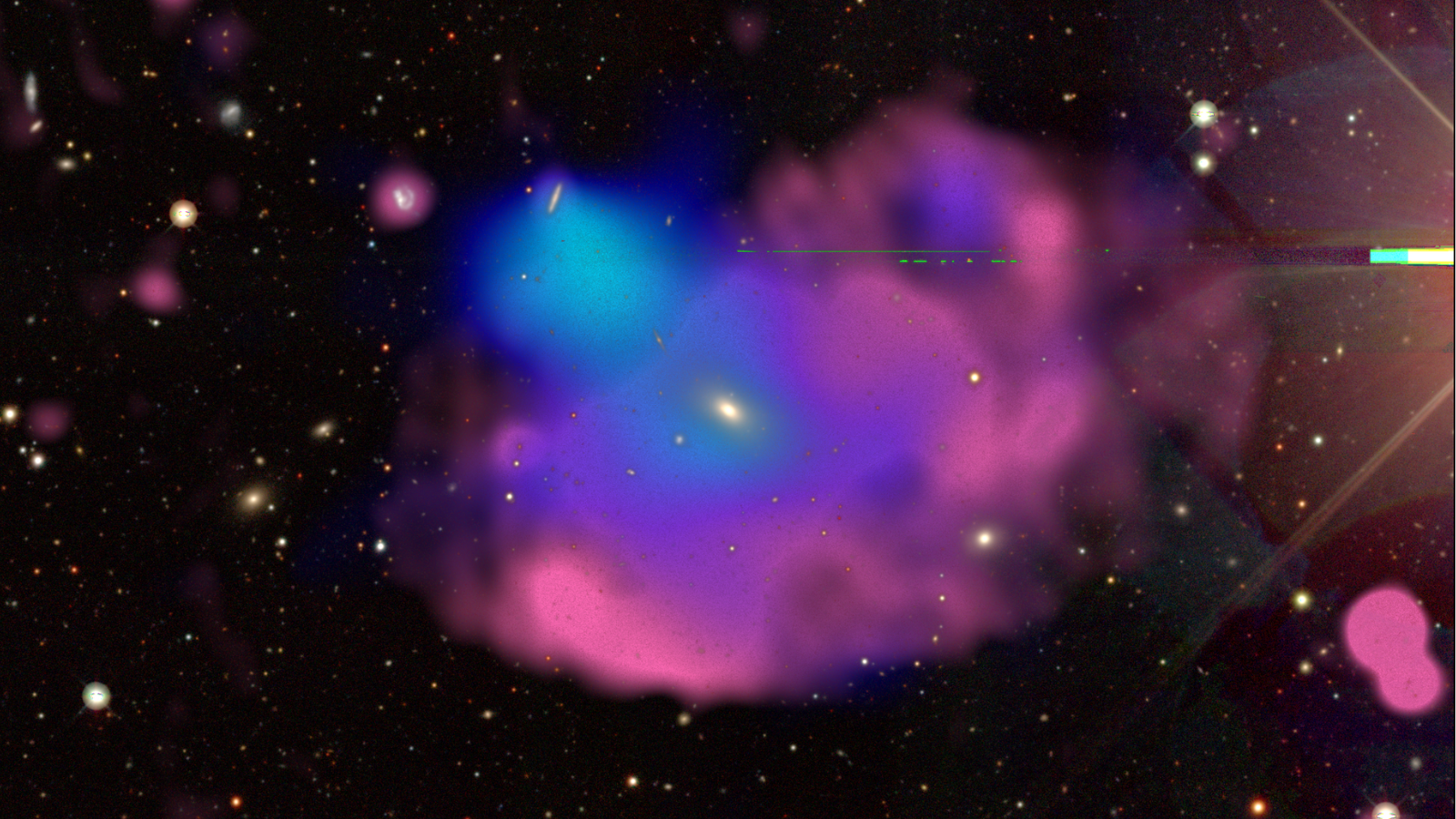A recent discovery by NASA’s James Webb Space Telescope (JWST) confirmed that luminous, extremely red celestial bodies in the early universe challenge established theories about the formation and progression of galaxies and their supermassive black holes.
A group of international researchers, headed by scientists from Penn State, utilized the NIRSpec instrument on board the JWST as part of the RUBIES survey to discover three enigmatic entities from the early universe, approximately 600-800 million years post the Big Bang, a time when the universe was just 5% of its current age.
The researchers examined the spectral readings, which measure the intensity of different light wavelengths emitted by the entities. Their analysis revealed signs of “old” stars, hundreds of millions of years in age, far exceeding the anticipated age of celestial bodies in a young universe.
The scientists were also surprised to discover signatures of massive supermassive black holes within the same entities, suggesting that they could be 100 to 1,000 times larger than the supermassive black hole in our Milky Way. These findings contradict current theories about the growth of galaxies and the formation of supermassive black holes, which propose that galaxies and their black holes evolve in tandem over billions of years of cosmic history.
“We have confirmed that these appear to be packed with ancient stars – hundreds of millions of years old – in a universe that is only 600-800 million years old. Remarkably, these objects hold the record for the earliest signatures of old starlight,” said Bingjie Wang, a postdoctoral scholar at Penn State and lead author of the paper. “It was totally unexpected to find old stars in a very young universe. The standard models of cosmology and galaxy formation have been incredibly successful, yet these luminous objects do not quite fit comfortably into those theories.”
The astronomers initially discovered the massive entities when the first set of data from JWST was released in July 2022.
During that time, astronomers speculated that the entities were galaxies, but they further examined the data by capturing spectra to gain a better understanding of the precise distances of the entities and the energy sources fueling their immense brightness.
The researchers then leveraged the fresh data to create a more distinct representation of the appearance of the galaxies and their contents. Not only did the team validate that the entities were indeed galaxies from the early universe, but they also also found evidence of surprisingly large supermassive black holes and an unexpectedly ancient population of stars.
“It’s very confusing,” said Joel Leja, assistant professor of astronomy and astrophysics at Penn State and co-author on both papers. “You can make this uncomfortably fit in our current model of the universe, but only if we evoke some exotic, insanely rapid formation at the beginning of time. This is, without a doubt, the most peculiar and interesting set of objects I’ve seen in my career.”
The James Webb Space Telescope (JWST) is furnished with infrared-detecting tools that can identify light from the earliest stars and galaxies. Essentially, the telescope enables scientists to observe events that occurred around 13.5 billion years ago, close to the beginning of the known universe, according to Leja.
One difficulty in analyzing ancient light is the challenge of distinguishing between the potential sources of the detected light. In the case of these early objects, they exhibit distinct characteristics of both supermassive black holes and aging stars.
Wang clarified that it is currently unclear the proportion of light emanating from each source. This implies that these could be early galaxies that are surprisingly old and more massive than our own Milky Way, forming much earlier than previously predicted, or they could be galaxies with normal mass but harboring “overmassive” black holes, which are approximately 100 to 1,000 times more massive than expected for such galaxies today.
“Distinguishing between light from material falling into a black hole and light emitted from stars in these tiny, distant objects is challenging,” Wang said. “That inability to tell the difference in the current dataset leaves ample room for interpretation of these intriguing objects. Honestly, it’s thrilling to have so much of this mystery left to figure out.”
In addition to their puzzling mass and age, if some of the light does originate from supermassive black holes, then these black holes are not typical. They emit significantly more ultraviolet photons than anticipated, and similar objects examined using other instruments do not exhibit the usual signs of supermassive black holes, such as hot dust and intense X-ray emissions. The researchers noted that the most surprising aspect is the apparent enormity of these systems.
“Normally, supermassive black holes are paired with galaxies,” Leja said. “They grow up together and go through all their major life experiences together. But here, we have a fully formed adult black hole living inside of what should be a baby galaxy. That doesn’t really make sense because these things should grow together, or at least that’s what we thought.”
Additionally, the researchers were puzzled by the remarkably small dimensions of these systems, spanning just a few hundred light years, which is about 1,000 times smaller than our Milky Way. Despite being home to approximately the same number of stars as our Milky Way galaxy – estimated to be between 10 billion and 1 trillion – these stars are confined within a space 1,000 times smaller than that of the Milky Way.
Leja indicated that if the Milky Way were compressed to the size of the galaxies they discovered, the nearest star would be almost within our solar system. The supermassive black hole at the center of the Milky Way, situated around 26,000 light years away, would be only about 26 light-years from Earth and would be visible in the sky as a massive pillar of light.
“These early galaxies would be so dense with stars – stars that must have formed in a way we’ve never seen, under conditions we would never expect during a period in which we’d never expect to see them,” Leja said. “And for whatever reason, the universe stopped making objects like these after just a couple of billion years. They are unique to the early universe.”
The researchers aim to carry out further observations, which they believe could aid in unraveling some of the mysteries surrounding these objects. The telescope will be pointed at the objects for longer periods to capture deeper spectra, distinguishing between star emissions and the potential supermassive black hole by identifying their specific absorption signatures.
“There’s another way that we could have a breakthrough, and that’s just the right idea,” Leja said. “We have all these puzzle pieces, and they only fit if we ignore the fact that some of them are breaking. This problem is amenable to a stroke of genius that has so far eluded us, all of our collaborators, and the entire scientific community.”
Journal reference:
- Bingjie Wang et al. RUBIES: Evolved Stellar Populations with Extended Formation Histories at z ∼ 7–8 in Candidate Massive Galaxies Identified with JWST/NIRSpec. The Astrophysical Journal Letters, 2024; DOI: 10.3847/2041-8213/ad55f7
Note: This article have been indexed to our site. We do not claim legitimacy, ownership or copyright of any of the content above. To see the article at original source Click Here











